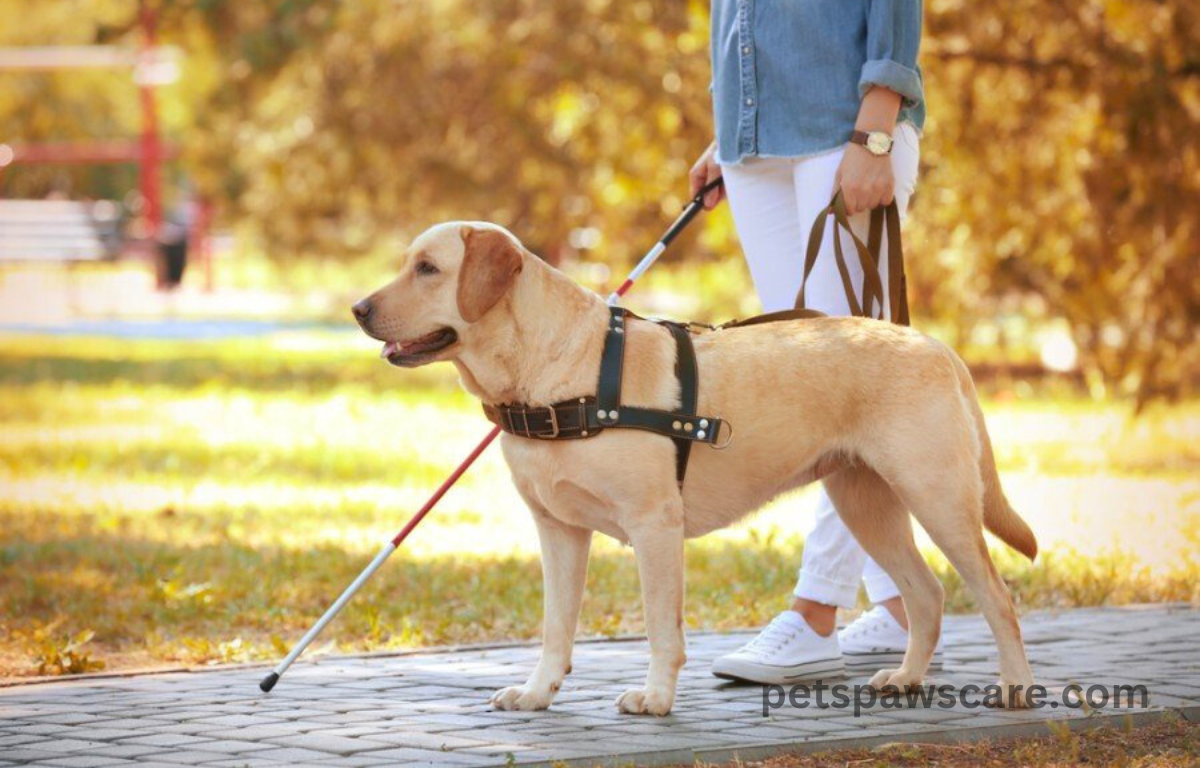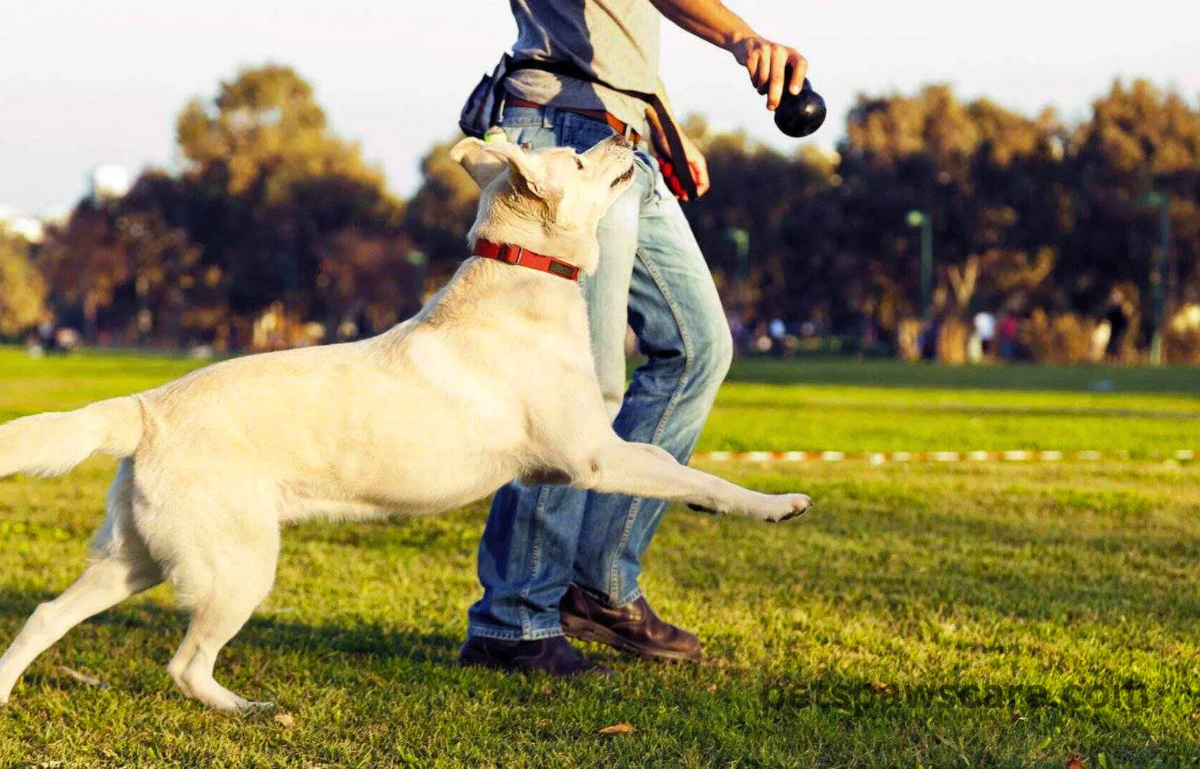Training Duration for a Service Dog:
Training a service dog usually takes about two years. This period is needed to teach the dog how to assist with specific needs, behave properly in public, and respond correctly to various commands.
Service dogs are more than just loyal companions; they are trained professionals that play a crucial role in the lives of individuals with disabilities. These dogs undergo extensive training to perform specific tasks that assist their owners in daily activities, enhancing their independence and quality of life. Whether guiding the visually impaired, alerting the deaf to crucial sounds, or supporting those with mental health challenges, the journey of a service dog from puppy hood to partnership is both fascinating and inspiring. This article explores the rigorous training process, the types of service dogs, and the profound impact they have on the lives they touch.
In the USA, about 500,000 service dogs help people in different ways, like helping those with autism, alerting people with diabetes when their sugar is low, and guiding people who can’t see.
What Is a Service Dog?
A Service Dog is a specially trained dog that helps people with disabilities. They watch for signs of illness, help calm their handlers during panic attacks, and perform many other crucial tasks. Depending on the training method, some Service Dogs are trained first and then matched with a handler, while others are taught alongside their handler from a young age.

Types of Service Dogs
Dogs are incredible animals and great friends to us. They give us love and help people in many ways, especially those with special needs.
Service and assistance dogs are essential for their owners because they help them live more freely and happily. Here’s a look at some different kinds of service dogs and what they do:
- Guide Dogs: Guide dogs help people who can’t see well. They’ve been trained for many years to lead their owners safely. Labs and Golden Retrievers are usually chosen for this job because they are intelligent, friendly, and good at picking up things with their gentle mouths. Interestingly, these dogs are so intelligent that sometimes they choose not to listen to a command if they think it’s safer for their owner!
- Hearing Dogs: Dogs can also help people who have trouble hearing. These fantastic dogs can tell their owners about sounds like smoke alarms, doorbells, and even when a baby cries. They touch their owner with a paw and then show them where the sound is coming from.
- Seizure Alert and Response Dogs: Some dogs can tell when their owner is going to have a seizure. They can even call for help and protect their owner during the seizure. It’s believed that they can sense changes in behavior or feelings before a seizure happens.
- Diabetic Alert Dogs: Dogs have incredible noses, and some are trained to smell changes in blood sugar levels. Diabetic-alert dogs can inform their owners if their blood sugar is too high or too low so they can take care of it quickly. Some of these dogs are even trained to get help from others if it’s an emergency.
- Allergy Detection Dogs: Dogs can also sniff out tiny bits of allergens in the environment. Allergy-detection dogs help their owners avoid things they are allergic to, especially for kids who want to be more independent while staying safe.
- Mobility Assistance Dogs: These dogs help people who have difficulty moving around. They can open doors, turn on lights, and fetch items. Bigger dogs are usually chosen for this job because they must be strong enough to help with these tasks.
- Autism Service Dogs: For people with autism, having a service dog can be a big help. These dogs boost their owners’ confidence and provide comfort. They also keep an eye on children with autism to make sure they are
- Psychiatric Service Dogs: These dogs help people with mental health issues like PTSD, anxiety, or depression. They make their owners feel safer and can even check that places are safe before their owner enters.
- Therapy Dogs: Therapy dogs differ from service dogs because they don’t stay with one person. Instead, they visit places like hospitals and schools to comfort many people. They need to be calm and okay with being around many people.
- – Guide Dogs: These dogs help blind people navigate. They learn to guide their handler around obstacles and through traffic.
- -Diabetic Alert Dogs: These dogs have the ability to detect changes in blood sugar levels through their sense of smell in their handler’s blood sugar levels and alert them if it’s too high or too low.
- – Autism Support Dogs: These dogs help autistic people feel more comfortable and safe. They can alert others in emergencies and help their handler manage daily activities.
It usually takes about two years to fully train a service dog. Training doesn’t stop there; it continues throughout the dog’s life to ensure they can always do their job well.
Also Read:
10 Reasons Why Dog not eating or drinking?
What Are The Advantages of Dog Tents

5 Golden Rules of Dog Training:
Before you start training your dog, knowing some essential rules that make training more accessible and help you avoid common mistakes is wise. Let’s look at five critical rules to follow when training your dog:
- Don’t keep repeating commands.
- Make training fun for your dog.
- Help your dog know what to expect.
- Reward your dog well.
- Avoid punishing your dog.
Can My Dog Become a Service Dog?
When should I begin training my dog?
You can start to train them as puppies at about 8 weeks old for simple things, but more complex training should wait until they’re about 6 months old. Some people wait until their dog is between 1.5 and 3 years old to start serious training so they can better understand their dog’s personality.
How to Start Training Your Service Dog: Simple Steps
- Starting as a Puppy: Begin training your puppy with basic skills like walking on a leash and not biting from as young as 7-8 weeks old.
- Foundation Skills:Teach simple commands like “Sit” and “Stay”. These are the basics that every dog needs to know.
- Leash Walking and Settling Down: Train your dog to walk nicely on a leash without pulling and to settle down quietly, especially in busy places.
- Ignoring Distractions:Teach your dog to stay calm and focused, even when there are noises or lots of people around.
- Learning Specific Tasks:As your dog gets better at the basics, start teaching them special tasks that they need to do to help their owner, like guiding someone who is blind or helping someone with PTSD.
- Behaving in Public: Make sure your dog knows how to behave in public places like stores and buses.

Extra Tips for Training Your Service Dog:
- – Meeting New People: Help your dog get used to meeting strangers by taking them on walks where they can see new faces and by having visitors at home. This helps them stay calm around new people.
- – Good Behavior on a Leash: Help your dog learn to behave on a leash by practicing inside your house first, making it fun with treats.
- – Clicker Training: Use a clicker to help your dog focus on you. Click and treat when they look at you after you call their name. Start with quick glances and gradually make them longer.
- – Short Training Sessions: Make sure the training sessions are brief and enjoyable. Long sessions can be boring and less effective.
- – Wearing a Work Vest or Harness: Teach your dog that wearing their vest or harness means it’s time to work. Put it on during training and take it off after.
These steps and tips will help you train a great service dog that can help its owner in many ways!
What Criteria Must a Service Dog Meet?
That’s a quick guide to the types of service dogs and their essential jobs. Dogs are not just pets; they are heroes in many ways! If you want to learn more about how dogs help us, you might like to read about military and police dogs next!
To become a service dog, a dog needs to meet specific requirements:
- Age: Ideal Age to Begin Training of a Service Dog is six months and one year old. This is when they learn basic behaviors like potty training and acting around others.
- Breed: Some dog breeds are better suited to be service dogs because of their natural traits. Choosing a breed with the right qualities for service work is essential.
- Training Skills: Dogs that learn quickly and know basic commands are more accessible for training for service tasks.
- Behavior: The dog’s personality is essential. Aggressive or timid dogs might not be as good as service dogs.
- Size: The size of the dog matters, especially for tasks like helping with mobility. The dog should be big enough to assist but not so big that taking places like public transport is hard.
These are the main things to consider when Educating a Service Dog.

Challenges in Training:
– Training might be slower if the dog or the handler has health issues or if the dog has behavior problems.
Finding the Right Dog:
– Not all dogs are suited for service work. The dog needs to have the right personality and abilities for the specific tasks they need to do.
– Sometimes, if a dog can’t do the job, you should start training with a new dog.
Training a service dog is a big commitment, but these dogs are beneficial to people who need them.
Conclusion:
In conclusion, training a service dog takes about two years and involves teaching them a variety of tasks to assist their owners. These dogs provide vital support, helping with everything from mobility to medical alerts. While the training process can be challenging, the benefits these dogs bring to their handlers’ lives are immense, offering greater independence and support. Not every dog is cut out for this role; successful service dogs are trainable, well-behaved, and appropriately sized for their tasks.
